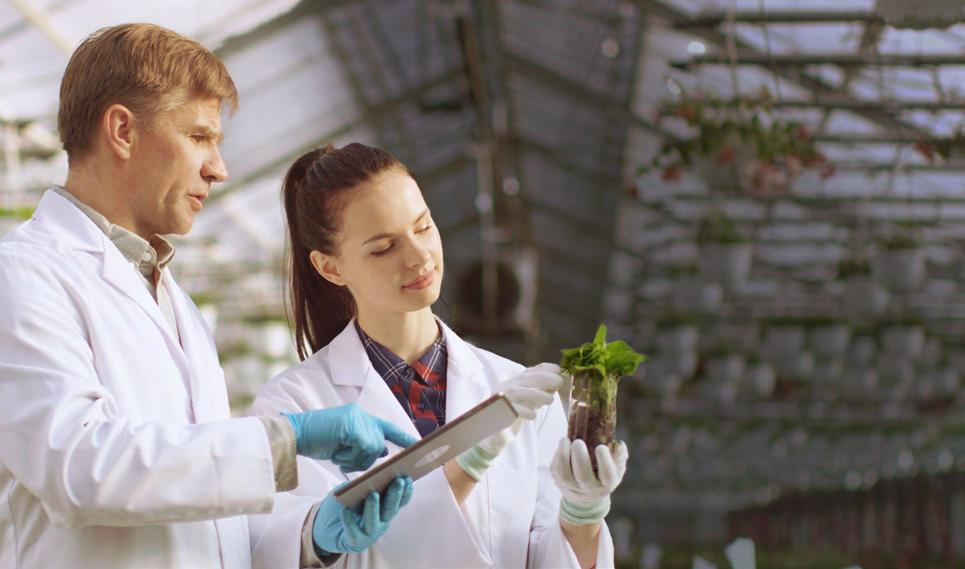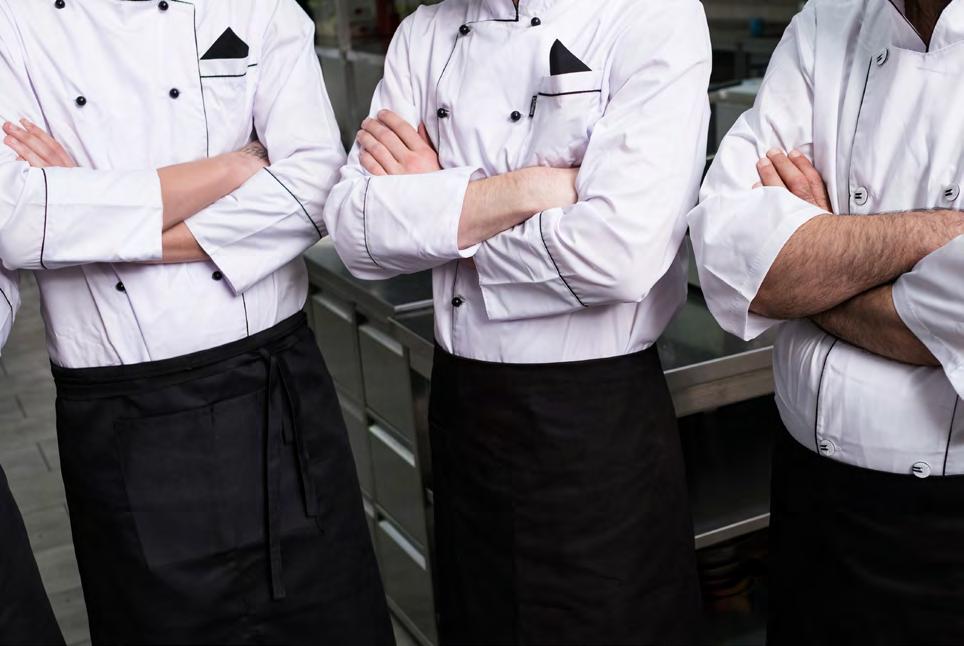
9 minute read
Raising the bar for food packaging technologists
Words by Nerida Kelton

As the peak professional body for packaging education and training in Australasia, it is paramount that the Australian Institute of Packaging (AIP) provides internationally recognised professional designations to enhance the profession across the globe.
Such a designation is the Certified Packaging Professional (CPP)®, which is a registered trademark of the Institute of Packaging Professionals (IoPP) in the United States. Since 1972, the IoPP has awarded over 2000 qualified applicants the designation ‘Certified Packaging Professional (CPP)’ which is now recognised globally as an indication of excellence as a packaging professional.
Candidates achieve the CPP designation by demonstrating significant industry expertise and experience, measured through a flexible applicant testing process and a detailed Certified Professional Development (CPD) program.
Attaining the CPP recognises a commitment to excellence in the packaging profession and the credential demonstrates a packaging practitioner possesses packaging knowledge, experience and skills to the degree that they deserve recognition as a true packaging professional. CPPs are in demand as speakers and as leaders on packaging teams.
Recognising the importance of the CPP designation, the AIP approached the IoPP to become the first association globally to roll out the program outside the US. The Australasian region now has more than 25 CPPs, with enrolments coming in every week from Australia, New Zealand and Asia. All AIP educational and training activities now attain CPD points towards the CPP designation which allows active members the opportunity to accrue points by learning, networking and attending packaging-related educational programs.
Through the guidance of the AIP, this model has now been replicated through the World Packaging Organisation (WPO). All WPO member associations are being encouraged to offer the CPP program in their country, elevate the profession globally and ensure packaging technologists and designers are recognised for their skills and expertise.
WPO member countries currently in the process of the rollout include Nigeria, Brazil, South Africa and Singapore with many others to follow shortly. The CPP designation is now internationally recognised by the IoPP, the AIP and the WPO.
By encouraging other countries to roll out the CPP program, the aim is to see packaging technology and design become more globally recognised as a profession, which in turn will encourage more people to attain greater packaging skills and knowledge and develop longterm careers in packaging. The CPP designation should also help companies recognise and employ highly skilled packaging professionals through international transfers and exchange programs.
Attaining the CPP designation is an excellent investment in your professional development as it allows organisations to seek out and hire the right professional based on verified knowledge, skills and industry contributions. In an ideal world, all companies hiring packaging professionals would ensure the CPP designation is part of the hiring and promotion processes.
The most recent IoPP salary survey revealed those with CPP accreditation earn between seven and 10 per cent more than their noncertified co-workers. Using the CPP program to assess and evaluate one’s professional competency validates you as internationally proficient as a packaging professional - a cut above your peers without the CPP.
Next time you meet someone with CPP after their name I would ask that you please congratulate them, as the designation is a significant achievement that deserves recognition by the business they work in and their packaging peers. Would you like to join packaging experts from around the world with the Industry’s leading professional designation? Ask the AIP how.
Nerida Kelton MAIP is executive director of the Australian Institute of Packaging and ANZ Board Member of the World Packaging Organisation. f
Food technologist – A career which ticks all the boxes
Words by Geoffrey Annison, PhD

Many years ago I was accepted into the Faculty of Applied Science at the University of New South Wales. At that time there were several schools in the faculty including Wool and Pastoral
Science, Chemical Engineering, Textile
Technology and Food Technology.
I had no idea which school to join so I asked my mother. Her advice was:
“Food technology, of course. People always have to eat”. That turned out to be sound advice and I’ve enjoyed a career in and around the food industry for all my working life.
Many years later, when the Australian Food and Grocery Council (AFGC) was considering how to increase the number of young people choosing food science and technology courses, I attended a meeting convened by AIFST to discuss the same issue. Also attending was the vice-chancellor from one of our universities who was of the strong view that the best way to attract the smartest students into a discipline was to target them when they are coming to the end of their second year of university. At this time students are beginning to focus on what to do after university, and what their career options might be.
Apparently, before then they are too busy having a good time to worry about such mundane matters as their future. Applying this approach to attracting students into food science, the vice-chancellor recommended structuring food technology degrees which share foundation courses with other science disciplines in first and second year and then, offering inducements to attract students into food science and technology electives
with targeted scholarship programs for their third and fourth year.
This strategy was one element of a number of initiatives later developed by the AFGC in partnership with the University of Queensland from 2012 which successfully increased the number of students entering and graduating with food technology degrees.
Another viewpoint is that young people should be targeted early by promoting the teaching of food science and technology in secondary schools in the hope that they’ll then go on and seek out food technology courses at university. I’m supportive of this approach too, but it requires considerably more resources including the development and maintenance of a curriculum and not all secondary schools would offer food technology courses in years 11 and 12.
A broader question is the type of person we may wish to attract into becoming a professional food technologist. The education pages of the national dailies frequently have the debate about the value, or otherwise, of graduates from specialist vocational courses versus more generalist courses. With the focus on critical thinking and problem solving as key attributes of graduates attractive to employers, the future roles of technical specialists may seem uncertain.
This in itself is a worrying trend as we live in a world of increasing complexity, based more and more on advanced technologies. It’s difficult to imagine that the need for expert technologists and scientists is going to diminish. And the reality is, of course, that it will not - demand can only increase.
Of course, attracting young people to consider a career in food technology is part of a bigger problem which is how to attract young people to consider a career in the food industry at all. The industry offers many careers and, I would argue, those careers can be exciting and rewarding.
The industry as a whole, however, is probably not as glamorous as some and possibly has an image problem. It is a rare occasion that a good news story appears about the food industry, with the most common stories focussing on the role of, and often apportioning the blame to, the food industry regarding issues such as the obesity epidemic and, more recently, the pollution of our oceans with plastics. The industry products and their marketing are often attacked. The AFGC is doing what it can by emphasising the many positives associated with the industry, including through the recent ‘we’re from here’ campaign. 1
Many young people seek out careers which allow them to contribute positively to society. The challenge for those of us in the food industry is to convey the message that the food industry is a force for good. The AFGC has always maintained that the industry itself is critical to the wellbeing of consumers in Australia and many more overseas - we literally cannot live without it - contributing to the health of the nation. As a large industry both in the domestic and overseas markets it contributes substantially to the wealth of the nation.
Notwithstanding that, as with all industries, it has an impact on the wider environment through the products it produces and the processes it uses. It is incumbent upon the industry to minimise those impacts.
The industry has a strong track record, and increasingly so, of developing and implementing initiatives and programs which address these societal issues - the health and wellbeing of consumers and the environment. So the industry is very much a force for good. To attract more young people into the industry, including as food scientists and technologists better promotion of the industry on this basis is required.
Returning more specifically to the training of food technologists perhaps an additional reason for boosting the numbers is simply that the more individuals who appreciate the form and function of the processed food industry the better. Exposing secondary school students to food technology and the concomitant nature of food manufacturing may not result in many of them going on to seek careers in the industry, but at least there would be more, better informed people in the community able to engage in informed debate about the food system and the role of the food industry in bringing safe, affordable, nutritious food from the farmer’s paddock to the tables of consumers.
There’s no doubt in my mind that food science and technology is a ‘hidden’ profession. Little is known about the advanced manufacturing processes and all its complexities which are employed by the industry. Many consider food manufacturing to be kitchen cooking on a larger scale. But the reality is somewhat different. Typically, product has to be handled and processed by the tonne, then packaged, all within stringent quality specifications. Our challenge as food technologists and scientists is to explain and promote the profession so that it is valued more by the community. Hopefully this would result in a flow-on effect to bolster the value placed on the food industry as a whole.
I suspect that the AFGC, in partnership with AIFST, will for some time be looking for ways to bolster the profession and the industry. Looking back at my own career path, as originally advised by my mother, I don’t think I would change anything.
Always interesting, always challenging, always rewarding and most importantly always worthwhile are the key messages for the young people today as they look to their futures. Working in the food industry, particularly as a technologist, in my opinion ticks all the boxes.
References
1. https://wearefromhere.com.au
Dr Geoffrey Annison is deputy chief executive at the AFGC and Professional Member of AIFST f










